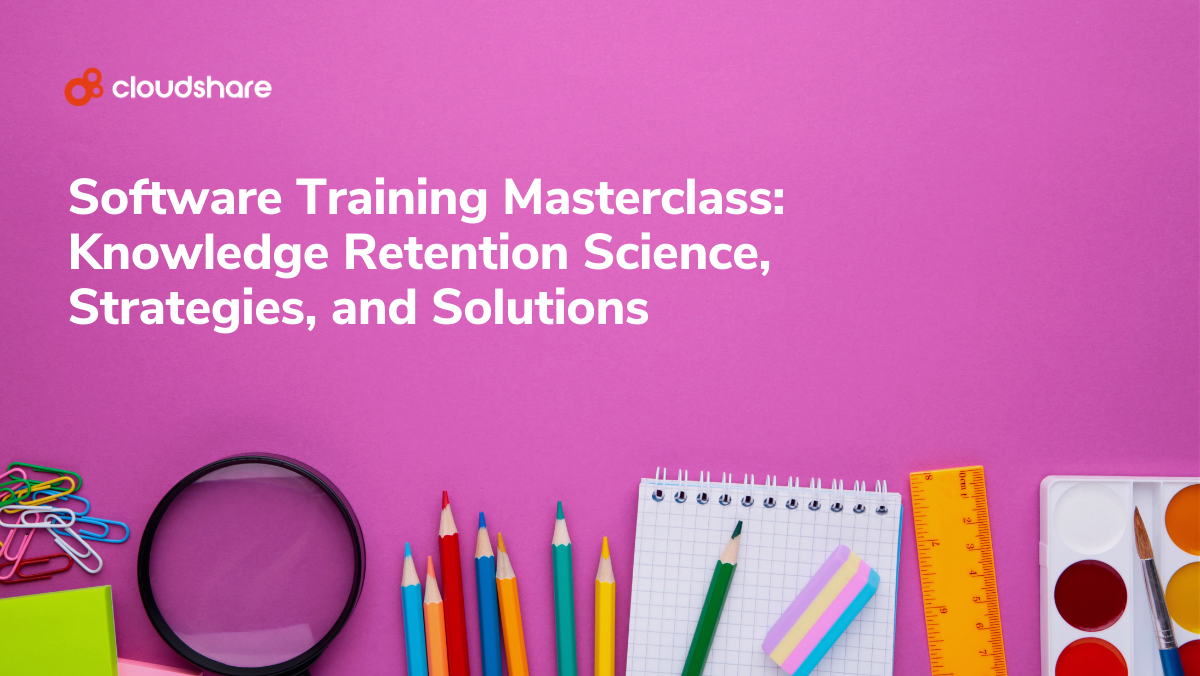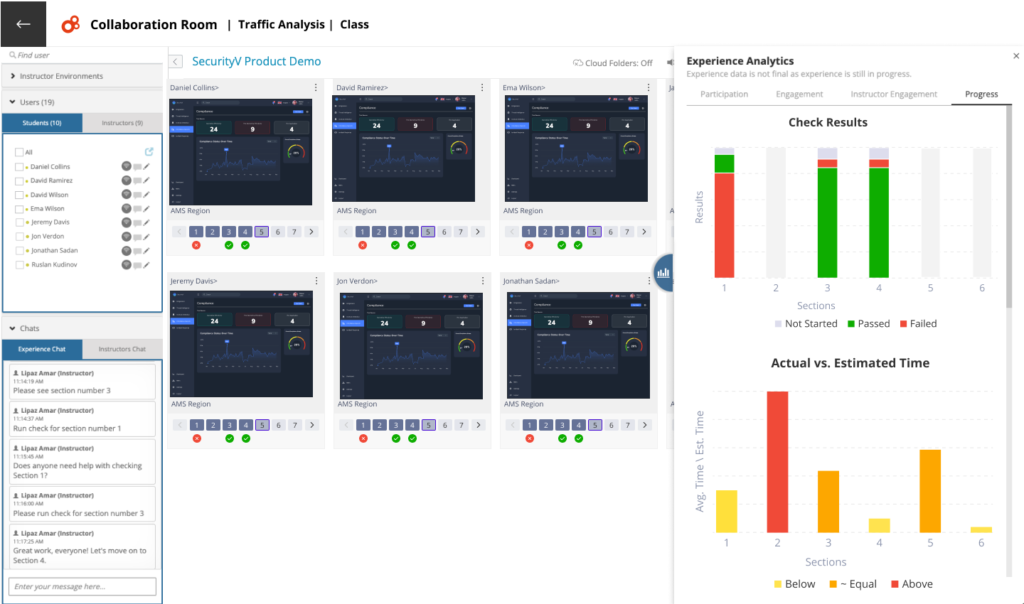Virtual training
Software Training Masterclass: Knowledge Retention Science, Strategies, and Solutions

“Tell Me and I Forget; Teach Me and I May Remember; Involve Me and I Learn.”
Who first said that? Benjamin Franklin? Confucius? We may never know for sure. What we do know is that in the software industry, customer education faces a growing challenge: making sure that product knowledge sticks. Increasingly complex workplace software is making massive demands on workers’ cognitive 🤯capacity. Information overload causes them to forget how to use programs and platforms. What’s more, 71% of U.S. executives believe that the pace of technological change exceeds employees’ ability to master new solutions.
For software providers this poses serious problems: slower adoption, longer time to first value, increased support costs, low satisfaction, and higher churn. It’s a perfect storm of customer 😰failure. That’s why training managers need to understand the science – not just the art – of teaching.
Understanding the Knowledge Retention Challenge
Hermann Ebbinghaus’s seminal work on the “forgetting curve” showed that most people forget around 75% of new information within 48 hours of learning it. That’s a sobering statistic for any training manager. But Ebbinghaus didn’t stop there. He also investigated ways to improve memory, and countless modern researchers have built on his early research.
Memory formation involves creating and strengthening connections between neurons in the brain’s 🧠temporal lobe. Key factors that influence how well these connections form and endure include:
- Active, emotional engagement with the material: for memories to stick, there must be strong emotions during “encoding” to activate the hippocampus, the region of the temporal lobe that consolidates new information into memories.
- Spaced repetition of learning sessions: training is most effective when learning sessions are spaced out, ideally with one or more nights of sleep between them. Rushing software training means it goes in one ear and out the other.
- Generating unique connections: we create memories by making associations, linking new ideas to our existing knowledge. We naturally remember information that we value – that speaks to our personal experiences and priorities.

Modern training approaches leverage these principles to boost knowledge retention. Software CEOs take note…
Evidence-Based Strategies for Better Retention
While traditional training methods often launch learners directly along the forgetting curve, innovative training strategies incorporate neurological insights to make product knowledge stick.
1. Active Learning through Hands-on Practice
Hands-on learning results in significantly better retention than passive approaches. In fact, interactive learning environments are over thirteen times more effective than lecture-based settings and make learners 600% more likely to put their knowledge into practice. That’s a no-brainer, right there. And get this: successfully completing a hands-on exercise doesn’t only increase excitement and engagement – it also releases dopamine, which is proven to aid knowledge retention.
2. Microlearning and Spaced Repetition
The optimal length of a learning session is between 10 and 52 minutes, depending on the individual. Breaking complex concepts into smaller modules and spacing them over time aligns with how our brains naturally process and store information.
3. Personalized Learning Paths
Relevant, personalized content naturally improves engagement and retention. While old-school learning 🎓is often a one-size-fits-all proposition, the most successful strategies are those that recognize the background and preferences of the individual.
Technology Solutions for Enhanced Retention
Several technologies are proving particularly effective in supporting knowledge retention in software training.
Virtual Hands-on Labs 🧑💻
These replicated online environments – which support both virtual instructor-led and self-paced training – allow learners to gain real-life experience of software in a risk-free setting. People often learn best from making and correcting mistakes, making virtual labs ideal for complex customer education.
Mobile Learning 📱
Mobile-optimized training supports microlearning and spaced repetition by allowing users to access brief learning sessions whenever convenient. After all, most of us are on call even when we’re away from our desks. The flexibility of on-demand training courses allows us to learn when we’re fresh and most receptive to new information.
Learning Experience Platforms 🧭
AI-enabled learning management systems (LMSs) and learning experience platforms (LXPs) can adapt both content and delivery modalities based on individual progress and performance, ensuring learners stay challenged without becoming overwhelmed. Some of us struggle to learn new software. Others get to grips with it in no time. Truly terrific training gets everyone to the finish line on their own terms and timelines.
Analytics and Optimization
What’s education without tests and exams?
Software customer education platforms and solutions need to provide detailed data about user behavior and learning outcomes, allowing organizations to:
- Identify where learners struggle most.
- Measure completion rates and efficacy.
- Optimize content based on actual usage patterns.
- Track long-term retention through follow-up assessments.
That kind of data is gold dust to any training manager. And that’s where the industry is at.

Implementing Effective Software Training Programs
Maximizing knowledge retention in software training is all implementing evidence-based knowledge retention strategies and leveraging the best technologies.
- Start with clear learning objectives aligned with actual user needs.
- Incorporate regular hands-on practice through virtual labs.
- Break up content into digestible modules with spaced repetition.
- Select technologies that support personalized learning.
- Use analytics to continuously improve the training experience.
Stellar software training isn’t just about delivering information; it’s about ensuring it stays with users and becomes practical knowledge. Getting it right means organizations can significantly improve their training outcomes and, ultimately, their adoption and retention rates. Big wins 🏅all around.




